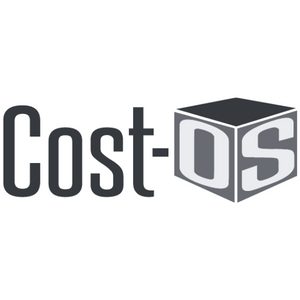- How It Works
- Products
- Pricing
- Resources
- Company
- Request a Demo
What Technology is Shaping the Future of Precon?
Half of the country's construction firms are planning to adopt new construction technology in the next 12 months.
It’s typical to say the construction industry is slow to adopt modern technologies. But that’s not entirely true. The way we've done construction has been evolving since we've started building. Every society around the world throughout time has tried to find new efficient ways to build.
In modern times, we’ve included not just more efficiencies, but ways to increase productivity, and most importantly, we’ve significantly increased safety on the jobsite. However, it is safe to say that technology has been slow to adopt preconstruction. Even CAD and BIM were designed to aid design, not preconstruction departments.
We’ve often been overlooked.
Once an extremely under-served user base, there are now plenty of precon-specific technologies that are improving the way we estimate and how the preconstruction phase of a project works. And the number of software targeting precon workflows is at a historic high.
Investors like private equity and venture capital firms invested $25 billion in construction technology from 2014 to 2019. Technology made for preconstruction was one of the top investments.
Driving this digital transformation surge is increasing complexity of projects, owner demands and accelerated delivery schedules, environmental demands and challenges, supply chain sensitivity, and competitive advantage.


Stewart Carroll, construction technology expert and Chief Customer Officer at preconstruction software company Beck Technology says, “The centralization of data will be a game-changer for today’s construction businesses, and how they adapt to it will be a deciding factor in their future ability to win work. By creating entirely new processes and workflows in which technology plays a central role, general contractors (GCs) have already empowered themselves to do much more in less time.”
You have a primary goal—creating an accurate estimate on time that wins the project. Though how that’s accomplished is unique to each precon team, there are common problems you all face. Fortunately, there are now tools that help overcome these challenges. Drones, artificial intelligence and machine learning, robotics, prefab, software…construction technology is helping solve common preconstruction problems.
Beck Technology, developers of the best construction estimating software and integrated preconstruction programs—DESTINI Estimator and DESTINI Bid Day have a user base of over 2,000.
Having held too many conversations to count, we’ve nailed down the top three challenges facing precon teams.
Three Preconstruction Problems
Solved by Technology
Data Silos
95% of all construction data isn’t used. Yet, 14 hours a week or more is spent trying to find information. (FMI)
Legacy estimating systems—all the programs you use to complete a deliverable—aren’t integrated. So, precon teams find themselves with missing information or the loss of information when transferring data to from one program to another, mistakes when trying to manually enter information from one tool into the other and wasting time by searching for the information in the first place.
This is an extremely inefficient way to work.
Eliminating these silos by choosing a full estimating system that includes cost history, takeoff, comparisons, reporting, and Excel-like workbooks streamlines workflows and speeds up the estimating process.
Even from the beginning of implementing DESTINI Estimator construction estimating software, Satterfield & Pontikes were able to cut their estimating time down 30 percent.
For Clark Construction Group , the database-driven DESTINI Estimator solved not only their desire to capture detailed project budgeting analysis, but it helped them increase their ability to provide exceedingly excellent service to their clients.
Mike Hurley a chief estimator at Clark Construction Group says, “Having DESTINI Estimator as a common platform has improved our internal preconstruction discussions as well as giving us consistency when communicating with project stakeholders. Being able to access and leverage our preconstruction cost data in DESTINI Estimator allows us to quickly and easily provide feedback and solutions to our clients.”


Inconsistent Standards
When your estimating process looks like the wild west, it doesn’t present the most professional appearance to owners.
One of the country’s largest contractors, Balfour Beatty was experiencing this inconsistency in their estimating standards. Over 10 different programs were being used over multiple offices. Owners weren’t recognizing that the estimates were coming from the same company even when the projects were similar but in separate locations.
The return on investment has been tenfold for Balfour Beatty, increasing their efficiency, improving client communication, and capitalizing cost history. A Vice President of preconstruction at Balfour Beatty says, “We were getting immediate feedback and immediate dividends paid by implementing the new software.”
Outdated Software
There are mounting concerns from general contractors about how secure their data is. So much so that 28% of GCs report that data security is preventing them from adopting new tech. Yet, in reality, it’s sticking to your outdated systems that puts you at risk of a security breach.
Every day, almost five million digital records are stolen or lost. Sticking with your outdated software leaves you vulnerable to getting hacked. Legacy systems that are no longer updated or supported are susceptible to malware and ransomware, data breaches, and not meeting regulatory compliance.
Almost 100 percent of surveyed general contractors believe that implementing and embracing new technology will benefit them. So, let’s break down how these advancements in technology have proven to improve efficiencies, collaboration, scheduling, and productivity during the preconstruction phase, as well as helping to avoid rework and reduce overall costs of projects.

"Having DESTINI Estimator as a common platform has improved our internal preconstruction discussions as well as giving us consistency when communicating with project stakeholders. Being able to access and leverage our preconstruction cost data in DESTINI Estimator allows us to quickly and easily provide feedback and solutions to our clients."

How Has Technology Improved the Preconstruction Process Today?
Cloud-based collaboration tools, 3D models and BIM, data analytics, laser scanners and drones, and the ever-growing topic of automation/artificial intelligence/machine learning has revolutionized preconstruction.

Cloud-Based Collaboration
Such tools help project team members disseminate working drawings, estimation costs, and timelines for different phases of construction across the office and the country. It's not just about availability, the collaborative tools also make sure the most current information is being used as it captures every update in real time.

Robbie Gronbach, LEED AP and Director of Preconstruction at Florida-based Willis A. Smith , says, “For the first time ever, we can actually work together as one team which is a huge stress reliever for everybody. Having a bid leveling software platform with formulas built-in means that we don’t have to worry about verifying them all the time. Whether you take time to measure those time savings or not, it’s obviously a more productive work environment. Having all that information stored on one platform will make it incredibly easy to go back through and collect certain pieces of information. That will ultimately improve our whole approach. We’ll be able to make project decisions based on bid data instead of guessing.”
Software like DESTINI Estimator construction estimating software that fosters real-time collaboration between stakeholders and owners not only saves the precon department’s time, but also ensures trust with owners. Having accurate and defendable numbers is one of the top reasons why Estimator users can impress owners and win repeat work.
Brian Parker, a senior estimator at Sundt Construction, says, “It’s definitely impressive. Clients receive a good visual and a price, just what our clients are looking for. They want to know what the building will look like and how much it will cost. They don’t want to spend time and money having an architect design something and then realize they can’t afford it. The DESTINI products give clients more confidence and insight as well as input in the preconstruction process.”
Model-Based Estimating
Amongst these technological implementations within preconstruction, comes one particularly significant technological advancement known as Building Information Modeling (BIM). BIM, simply put, is the digital representation of a building or infrastructure’s physical and functional characteristics that provides a shared knowledge resource of information about a specific structure.
3D modeling and BIM have truly revolutionized the part that preconstruction plays during the conceptual phase of construction projects. These technological advancements in AEC have helped solve the age-old dilemma of interpreting drawings and prevent costly rework and scheduling delays because precon teams can now guide design to develop the best possible project outcomes.
Brent Pilgrim, National Director of Preconstruction at The Beck Group, and leading construction technology expert says that these tools that allow precon teams to adopt model-based estimating are becoming “…experts in statistical analysis, wizards wielding artificial intelligence, and masters of risk model simulation.”
Integrated building models are fast becoming the standard for the way we build. Software that integrates with model-based estimating tools like DESTINI Estimator are what helps precon teams spend less time counting and more time impressing owners.
Trent Isaacson, Vice President of Preconstruction at Layton Construction, has experienced this firsthand, “…the integrated approach is where you tend to feel most accomplished in what you’ve done, and relationships are developed in deep ways. At the end of the day, you’re all satisfied with what has happened and everybody’s hopefully made their profit that they were hoping, and a product was delivered to a client.”

Data Analytics
The recording of data analytics is the process of collecting, analyzing, recording, and further interpreting data to help make better project decisions. This helps boost efficiency, safety, and overall project outcomes.
Construction data statistics are staggering. When interpreting the information behind the reasons why rework occurs, $31.3 billion is lost because of bad data.
If most construction firms agree that capturing and leveraging their data would prevent rework, change orders, and reduce costs, why is it then that on average only one-third of construction firms are using their data?
A data-driven platform like DESTINI allows preconstruction teams the ability to compare estimates, spot trends, predict and ensure cost certainty, and mitigate risks.
Tom Quinn, preconstruction manager at Russell says, “DESTINI Estimator helps justify our pricing to clients. If they want to challenge our numbers, we can produce the data now that says, ‘this is what we’ve seen in the past, so this is what we think you’re building will cost in the future.”
Technology Use in Preconstruction
Once an extremely under-served user base, there are now plenty of precon-specific technologies that are improving the way we estimate and how the preconstruction phase of a project works.


Laser Scanners & Drones
Laser scanners and drones capture a wide variety of site information through mapping and surveying so that the assessment of the project cost is relative to actual site activity. This information can then be used to create realistic 2D or 3D models of the site.
These two digital technologies have been ground-breaking in how preconstruction teams gather and analyze contextual data from the smallest of details in site conditions to the total amount of space. Knowing these specifics drives better decision making.
Precon teams are moving into the role of trusted advisor to owners, not just a team that gets the ‘right numbers.’ Backing up your decisions with data is a powerful way to connect with owners. You can only do that with the right tools.
Learn MoreArtificial Intelligence and Machine Learning
AI has taken the world by storm. It is estimated that by 2027, the market value of AI will be $267 billion globally. 77.2 million people in the United States use ChatGPT. Since its popularity grew in 2023-2024, many questioned its validity, but many others jumped right in and began testing it.
Preconstruction professionals embracing AI are testing it by running drawings through it, having it create complex Excel formulas, and using it to help speed up processes—like Togal.AI takeoff software.
Automation is helping eliminate these necessary yet mundane tasks that take time away from skilled estimators who can now add value to projects by guiding design, value-engineering, collaborating with owners, and focusing on making the best-informed decisions to deliver higher quality buildings in record time.
Togal’s integration with DESTINI Estimator construction estimating software is proven to significantly speed up the estimating process by up to 80 percent.
Emerging AI and machine learning technology is allowing precon teams to complete their work faster, do more estimates, and add more projects to their schedules. Which, in turn, leads to higher profitability.
As more precon teams embrace AI, our eyes are on the development of generative and predictive AI and how that can positively impact precon in the future.
Learn More
-
Often, people think quality is the designer or engineer’s responsibility; however, within construction we both inherent and take on risk. The architect tends to move the risk onto the preconstruction department. How can you perform takeoff if you don’t trust the drawings?
The precon team needs to translate drawings into what makes business sense for the owner.
-
Not only are there contractual penalties for not delivering a project on time, but we also experience the opportunity cost associated with late delivery.
-
As an industry we have people’s lives in our hands, and no one wants a death or injury to occur in the field.
The likelihood that risk is introduced is highest earlier in the life of a project and if not caught early on it is likely going to result in an issue in the field. Catching problems later costs more and pushes timelines.
-
Often, people think quality is the designer or engineer’s responsibility; however, within construction we both inherent and take on risk. The architect tends to move the risk onto the preconstruction department. How can you perform takeoff if you don’t trust the drawings?
The precon team needs to translate drawings into what makes business sense for the owner.
-
Not only are there contractual penalties for not delivering a project on time, but we also experience the opportunity cost associated with late delivery.
-
As an industry we have people’s lives in our hands, and no one wants a death or injury to occur in the field.
The likelihood that risk is introduced is highest earlier in the life of a project and if not caught early on it is likely going to result in an issue in the field. Catching problems later costs more and pushes timelines.

Every industry has a past, present, and future outlook on its standing. Preconstruction is no different. Within this industry, past and present create the perspective of modern preconstruction and modern preconstruction is then used to drive the future of preconstruction.
Experience the Power of DESTINI Estimator
The next generation of preconstruction estimating is here. Get ready to see your data in a whole new way.
Get Started
-1.png?width=112&height=112&name=image%20(4)-1.png)










